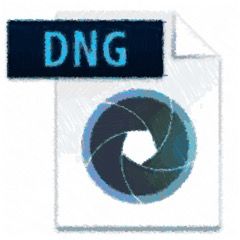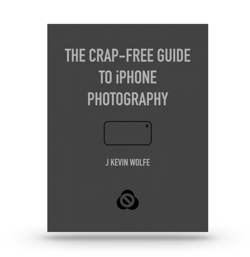The confounding world of RAW photography in iOS.

The iPhone can finally shoot in RAW*.
*But currently there are a lot of disclaimers to that.
Note: The past few days there’s been much misinformation spread about shooting and editing RAW on iPhone. And admittedly, I’m guilty as well as the big news sites. But hopefully the correction in this post will set the record straight. Thanks to to William Wilkinson, developer of the Manual camera app for setting a few things straight.
First off: What’s RAW?
RAW is a file for storing unprocessed sensor data. Everything about RAW is wrong, including the name. RAW doesn’t stand for anything. It’s not an acronym, so why it’s it capitalized? It should stand for “Really Awful Wreck” since that’s what the RAW concept has become. First let’s get some myths straight:
- RAW files are not images. They’re crude strings of light sensor data. RAW files must be converted to an image format like JPG before you can do anything with them. Some RAW files (like the DNG files on iOS) have a small JPG preview built in.
- RAW files from each camera model are different. Camera manufacturers can’s agree on a RAW standard. They haven’t even created a consistent standard for their own cameras. PhotoRaw, a great RAW editor for iOS, has been updated 17 times during the last year just to try to keep up with the different RAW files from new camera models. What’s sad about the camera companies not playing nice is that eventually the converters for these gazillion RAW formats won’t be maintained and all those RAW files that people shot a few years ago won’t be readable one day in the future. (By contrast, JPG files shot 25 years ago are still readable today.)
- DNG is the closest thing to a RAW standard. Adobe’s DNG format puts the original sensor data into a universal format and will be around long after proprietary RAW files can’t be read.
- Only certain iOS devices can handle DNG files iPhone SE, 6s, 6s+, 7, 7+ and the 9.7" iPad Pro are capable of managing DNG files. It’s a hardware thing, so the ability will never be available with older models.
- You can’t currently shoot DNG with the iPhone Camera app. Whuhh? Yeah, this may be added later. But the iSight cameras on your iPhone are built to do JPGs really well. And some features (like HDR and Portrait mode on iPhone 7+) require processing, so they can’t work with the DNG format. Plus 99% of iPhone users will find DNG inconvenient anyway.
- Before editing, DNG files may not look as good as a JPG. JPGs shot with the iOS Camera app go through a massive amount of automatic processing to make them look their best. A DNG file’s preview is basically a JPG thumbnail.
- You can’t currently edit DNG files in the built-in Photos app. Photos stores these files fine, but can only edit the JPG thumbnail of the DNG file.
So why shoot DNG anyway?
If working in DNG seems a hassle—it is. That’s why most iPhone users will never shoot a single shot in DNG. For people who post their photos on Facebook without editing them, using the Camera app and shooting JPGs is best. However if you edit many of your iPhone images, you’ll get much better results if you shoot in DNG format and process them later.
Much data is discarded when a JPG is saved in order to keep the files small. When you try to edit a JPG, data of color and tone are missing and results will be substandard. With a DNG file, you can go back and re-expose your image from the original sensor data, resulting in a cleaner, clearer, more-accurately-exposed final image.
How to shoot DNG on an iPhone.
The apps that shoot DNG grow daily and how they function varies. I’ll only covers the ones that save DNGs directly to the camera roll, since they allow you to edit them in the Photos app:
How to Edit DNG files on your iPhone.
Since you can’t edit DNG files in the Photos app, you’ll have to use another editor. After testing numerous apps, Snapseed appears to be one of the few editors that can actually work with DNG files. But there’s an iOS glitch in editing currently that will not revert the edited JPG to DNG. Save your edited DNG as a JPG copy in Snapseed and all will be fine.
How to determine if a file is RAW or not.
The Photo Investigator app was recently upgraded to show metadata for DNG files. Open an image, launch Investigator from the Share menu and it will show you if it has a DNG extension.
Is shooting RAW worth it on your iPhone?
Many pro photographers shoot JPG over RAW so you don’t have to shoot DNG even if you’re a serious iPhoneographer (I still laugh every time I write that oxymoron.) But you might find that working with RAW is worth all the effort and keeps you from lugging around that DSLR all the time. It only costs a few bucks for one of the camera apps above, so experimenting with DNG has almost no entry cost.

Get the definitive book for mastering your iPhone camera: The Crap-Free Guide to iPhone Photography
